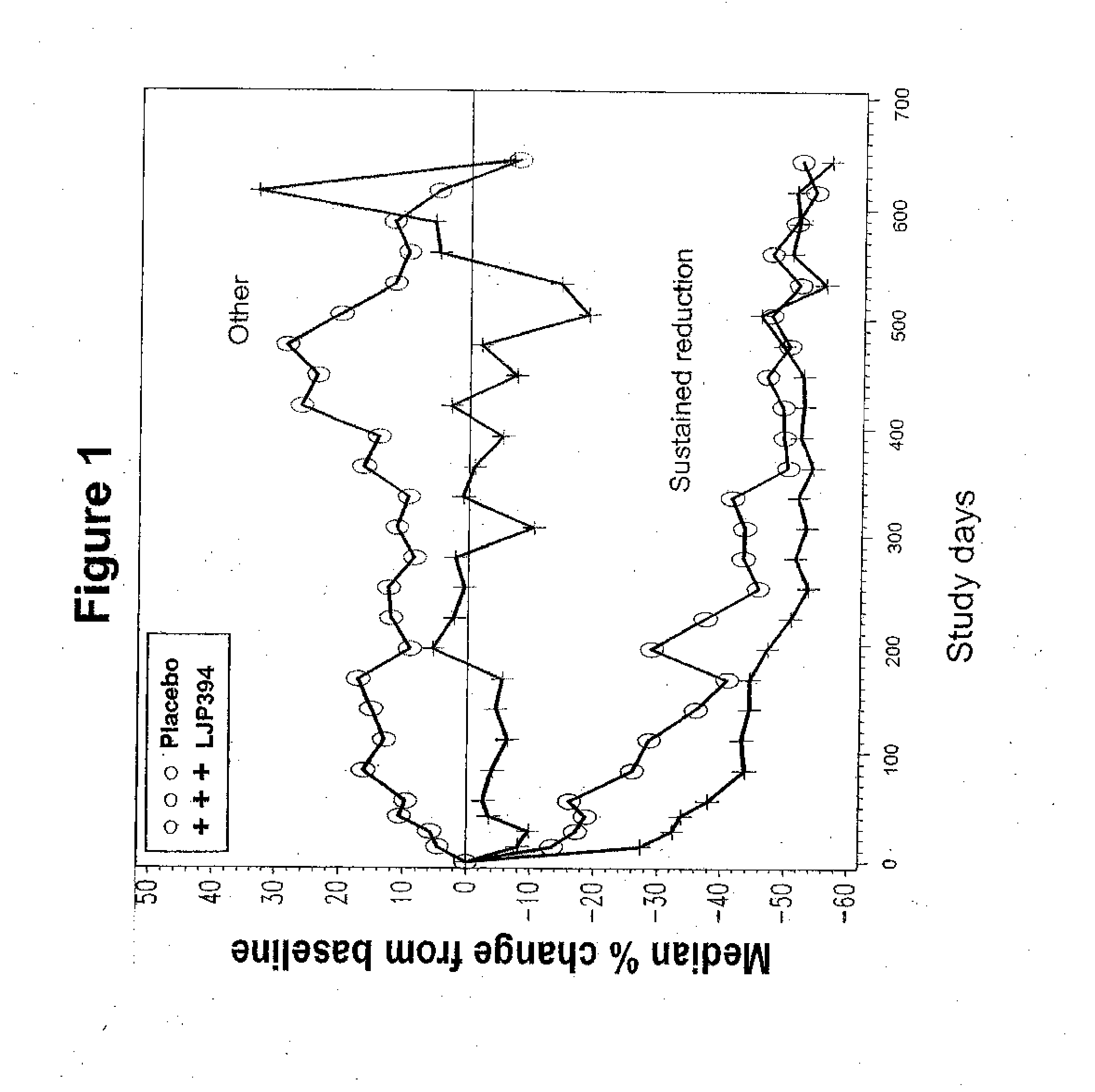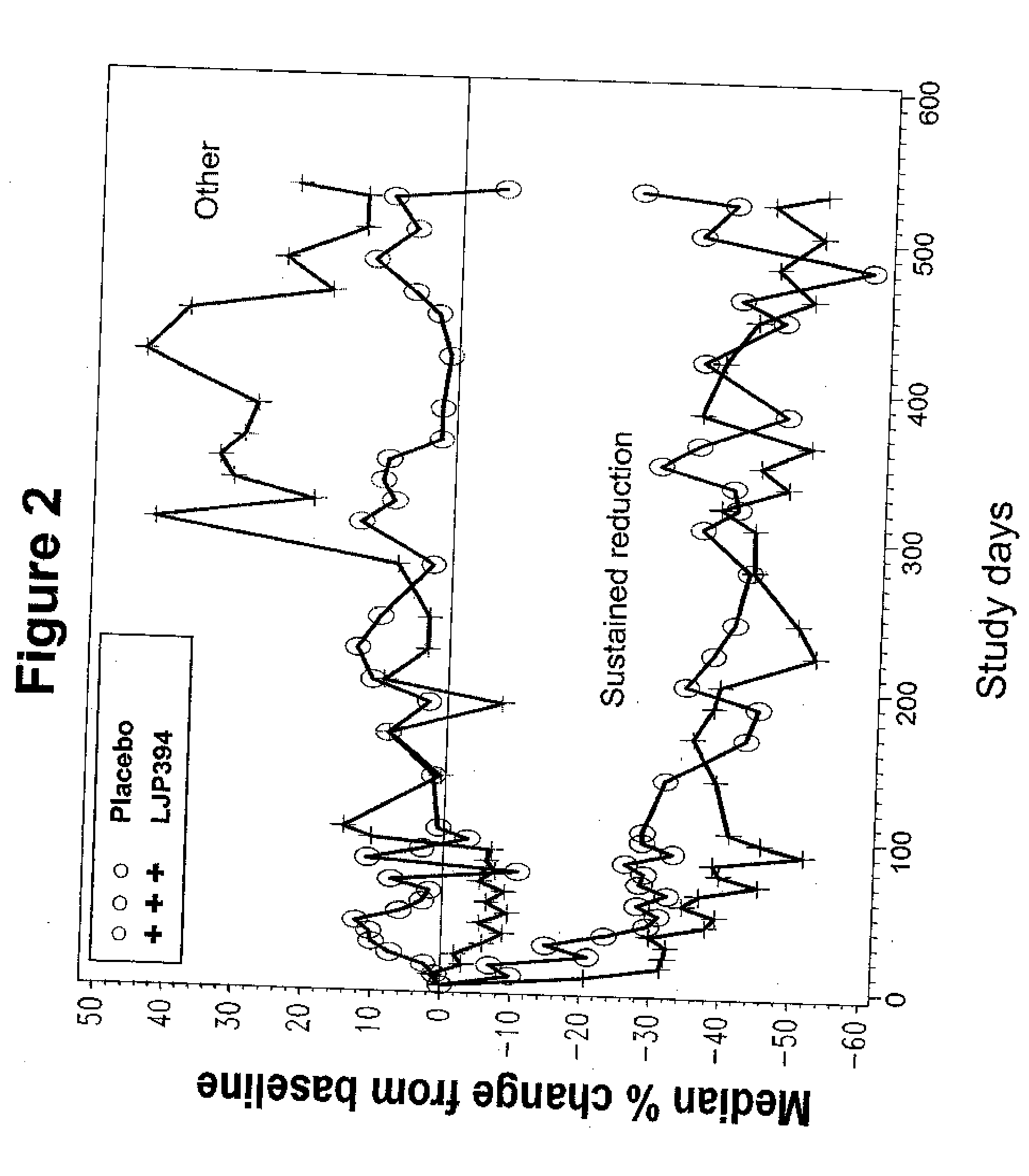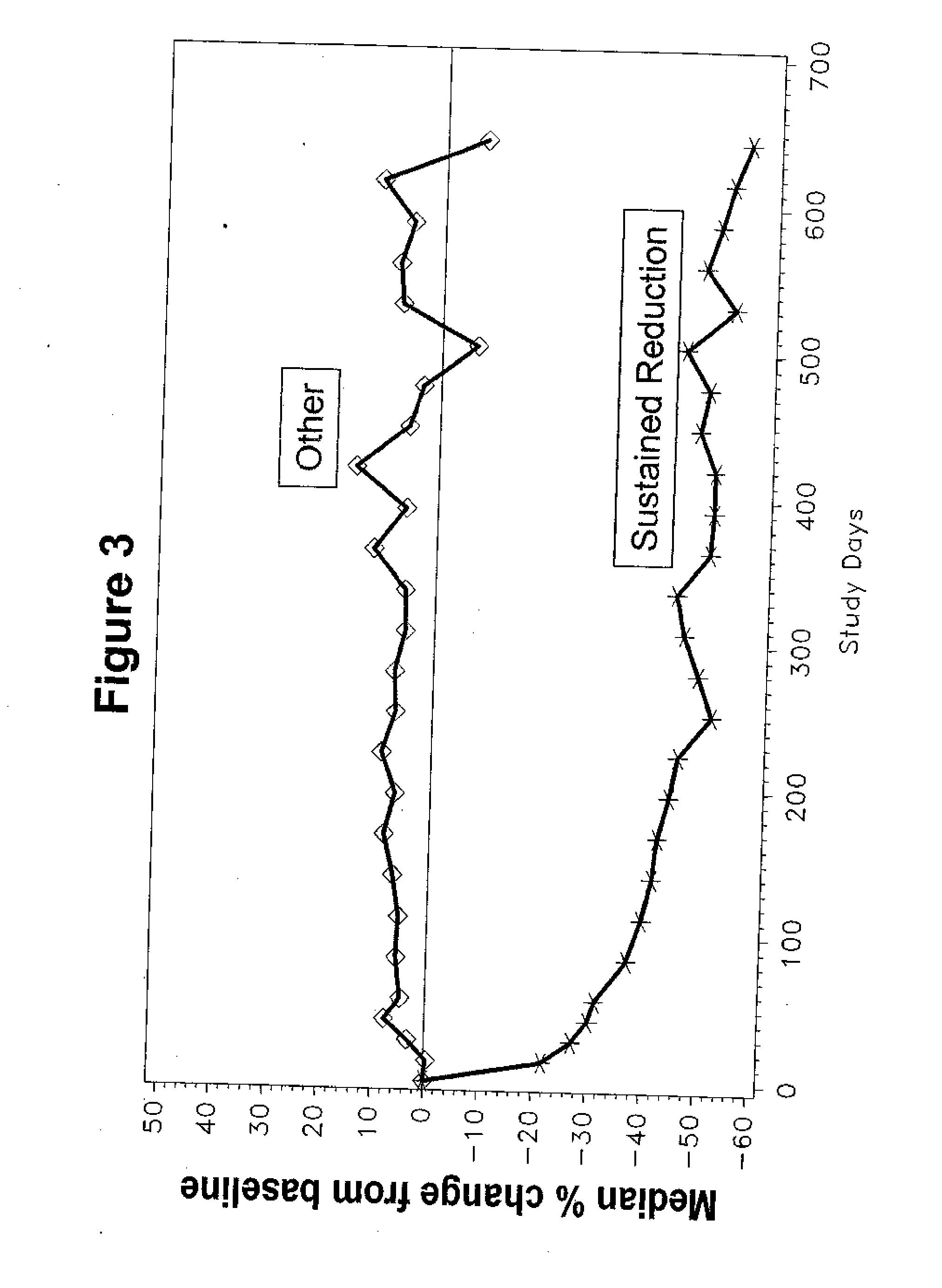Methods of treating and monitoring systemic lupus erythematosus in individuals
a systemic lupus erythematosus and individual technology, applied in the field of antibody-mediated pathologies, can solve the problems of insufficient efficacy, poor tolerability, and poor overall survival of lupus nephritis, and achieve the effects of reducing the level of circulating anti-dsdna antibodies, and reducing the risk of renal flar
- Summary
- Abstract
- Description
- Claims
- Application Information
AI Technical Summary
Benefits of technology
Problems solved by technology
Method used
Image
Examples
example 1
SLE Patient Population Treated with LJP 394
[0195] A study was conducted in patients who met American College of Rheumatology criteria for the diagnosis of SLE, had a previous episode of SLE renal disease within four years, and had elevated anti-dsDNA≧15 IU / mL by the Farr assay at time of enrollment (Tan E M, et al. (1982) Arthritis Rheum 25:1271-7). Patients were excluded if they had evidence of a renal flare within three months of screening; were receiving prednisone or prednisone equivalent>20 mg / day, azathioprine>200 mg / day, methotrexate>25 mg / wk and / or cyclophosphamide at any dose within three months of screening; or a serum creatinine level≧2.5 mg / dL. The study was conducted in the U.S. and Europe according to Good Clinical Practices and all patients provided voluntary informed consent.
[0196] A pharmacodynamic assay has been developed to measure the binding affinity of patients' anti-dsDNA antibodies to LJP 394 (Sem D S, et al. (1999) Arch Biochem Biophys 372:62-8; McNeeley ...
example 2
Study Design for the Treatment of SLE Patients with LJP 394 (Phase II / III, 90-05)
[0197] In this double-blind, randomized controlled, multicenter trial, intravenously administered LJP 394 was compared with placebo in SLE patients with prior renal involvement. Patients were randomized to receive LJP 394 100 mg as a 2 ml bolus intravenous injection on a weekly basis or placebo for 76 weeks. After initiation of the trial, the protocol was amended to include 8 week off treatment periods alternating with 12 weekly treatments with 50 mg (1 ml bolus injection) LJP 394 or placebo. The first 16 weeks, when patients received 100 mg LJP 394 or placebo weekly, was considered the ‘induction period’, followed by ‘maintenance’, when patients alternated 8 off and 12 weeks on treatment. The 20-week cycles were to be repeated three times for a total of 60 weeks.
[0198] The primary endpoint was the time to a documented renal flare. A protocol-defined renal flare required that it be attributed to SLE ...
example 3
Study Design for the Treatment of SLE Patients with LJP 394 (Phase III, 90-09)
[0199] Patients were treated with weekly doses of 100 mg of LJP 394 or with placebo. Patients were also permitted to receive certain other treatments including some but not all immunosuppressive drugs using a definition similar to Example 2. This randomized, double-blind, placebo-controlled study was conducted at more than 70 major medical centers in North America and Europe. Patients could remain in the study for up to 92 weeks.
[0200] The prospectively defined analysis groups were the intent-to-treat population and patients with impaired renal function. The intent-to-treat population was defined as patients with high-affinity antibodies to LJP 394. The patients with high-affinity antibodies to LJP 394 were those with a Kd′≦0.8 mg / ml. Patients with impaired renal function were defined as having a serum creatinine level of 1.5 mg / dL to 3.5 mg / dL at baseline. In general, patients with impaired renal funct...
PUM
| Property | Measurement | Unit |
|---|---|---|
| Fraction | aaaaa | aaaaa |
| Fraction | aaaaa | aaaaa |
| Fraction | aaaaa | aaaaa |
Abstract
Description
Claims
Application Information
 Login to View More
Login to View More - R&D
- Intellectual Property
- Life Sciences
- Materials
- Tech Scout
- Unparalleled Data Quality
- Higher Quality Content
- 60% Fewer Hallucinations
Browse by: Latest US Patents, China's latest patents, Technical Efficacy Thesaurus, Application Domain, Technology Topic, Popular Technical Reports.
© 2025 PatSnap. All rights reserved.Legal|Privacy policy|Modern Slavery Act Transparency Statement|Sitemap|About US| Contact US: help@patsnap.com



